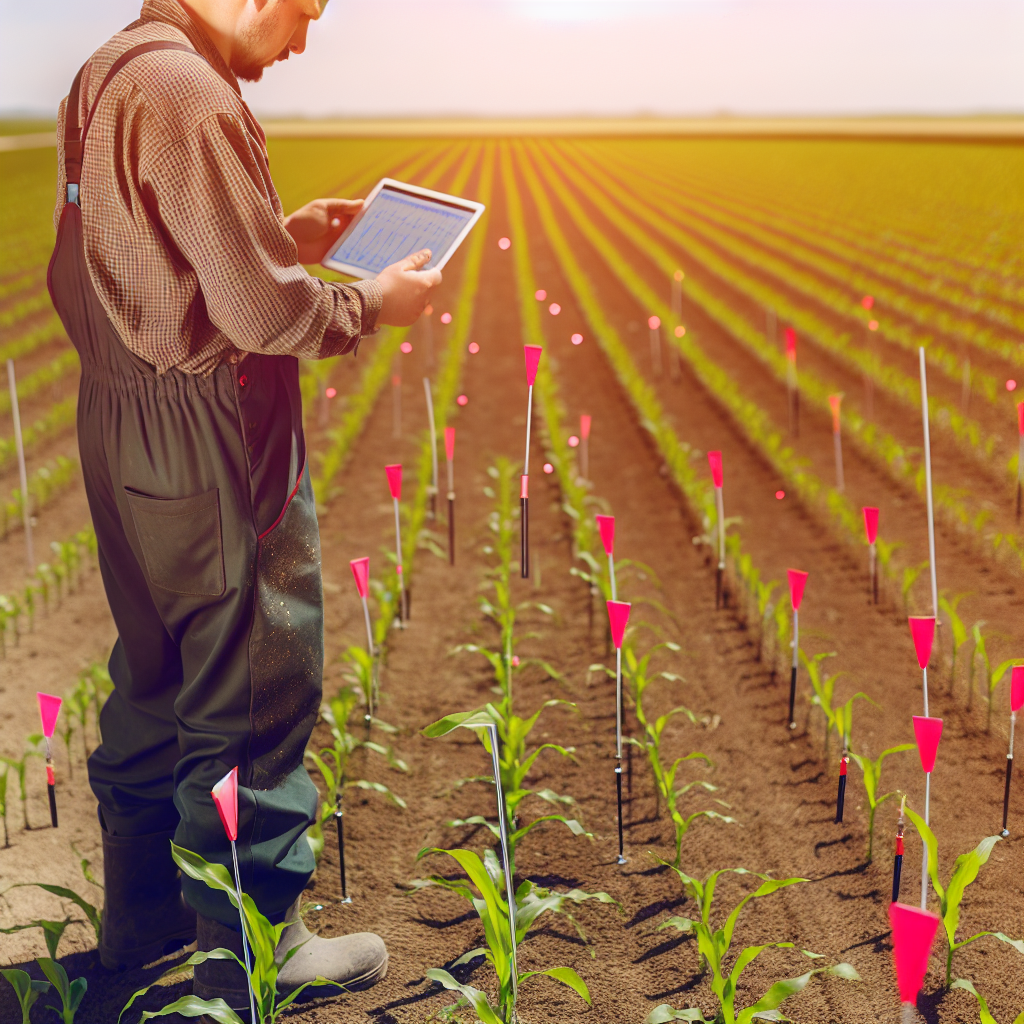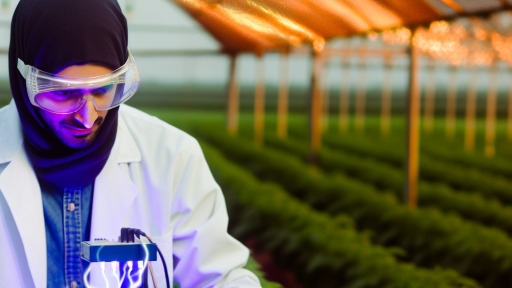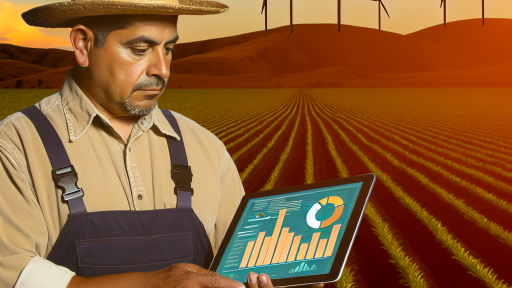Introduction to Wireless Sensor Networks in Agriculture
Overview of Wireless Sensor Networks
Wireless Sensor Networks (WSNs) play a crucial role in modern agriculture.
These networks consist of distributed sensors that collect data remotely.
Farmers can monitor environmental conditions without being physically present.
As a result, WSNs enhance decision-making and optimize resource usage.
Benefits of WSNs in Smart Farming
WSNs provide several advantages for farmers looking to implement smart practices.
First, they improve crop health monitoring and yield prediction.
Moreover, sensor data allows for precise irrigation scheduling.
This minimizes water waste and enhances conservation efforts.
Additionally, farmers can detect pest infestations early on.
Thus, they can take timely action to protect their crops.
Components of Wireless Sensor Networks
A WSN consists of various components working together seamlessly.
These include sensor nodes, gateways, and data processing units.
Sensor nodes gather data from the environment, such as soil moisture.
Gateways transmit this information to a central server for analysis.
Finally, data processing units analyze the collected information.
Transform Your Agribusiness
Unlock your farm's potential with expert advice tailored to your needs. Get actionable steps that drive real results.
Get StartedThis helps farmers make informed decisions regarding agricultural practices.
Implementing WSNs in Agriculture
Farmers must consider several factors when implementing WSNs.
First, they need to select appropriate sensor types for their needs.
Next, determining the optimal network layout is essential.
Finally, integrating data analytics tools is crucial for actionable insights.
Challenges of WSNs in Agriculture
Despite their benefits, WSNs face certain challenges in agricultural settings.
These challenges include connectivity issues and data security concerns.
Additionally, environmental factors may impact sensor performance.
Farmers must address these challenges to ensure successful implementation.
Benefits of Implementing WSNs in Smart Farming
Enhanced Data Collection
Wireless sensor networks streamline the process of data collection on farms.
These networks offer real-time insights into soil moisture levels, temperature, and humidity.
Farmers can make informed decisions quickly, improving crop management.
Moreover, accurate data helps optimize resource usage, reducing waste.
Improved Crop Monitoring
WSNs facilitate continuous monitoring of crop health and growth stages.
This technology identifies pests and diseases at early stages.
By acting promptly, farmers can protect their crops efficiently.
Furthermore, sensors can track the effectiveness of interventions applied.
Precision Agriculture
Wireless sensor networks enable precision farming techniques.
This approach customizes farming practices for specific field areas.
As a result, input costs decrease, while yields increase.
Farmers can apply fertilizers and water exactly when needed.
Automated Irrigation Systems
WSNs support automated irrigation systems that respond to soil moisture levels.
This leads to water conservation and improved crop resilience.
Farmers can set schedules that align with weather conditions, ensuring efficiency.
Showcase Your Farming Business
Publish your professional farming services profile on our blog for a one-time fee of $200 and reach a dedicated audience of farmers and agribusiness owners.
Publish Your ProfileConsequently, this technology reduces labor requirements significantly.
Cost Reduction
Implementing WSNs leads to significant cost reductions over time.
Farmers save on labor costs due to automation and remote monitoring capabilities.
Furthermore, optimized resource usage minimizes input costs.
As data accuracy improves, farmers avoid over-application of products.
Support for Sustainable Practices
WSNs promote sustainable farming practices through informed decision-making.
This technology enhances resource efficiency, reducing environmental impact.
Farmers can implement practices that minimize chemical use and soil degradation.
This fosters a healthier ecosystem and enhances biodiversity.
Types of Sensors Used in Smart Farming Applications
Soil Moisture Sensors
Soil moisture sensors measure the water content in the soil.
They help farmers determine when to irrigate crops.
Consequently, these sensors prevent overwatering and save water resources.
Weather Stations
Weather stations collect data on temperature, humidity, and wind speed.
This information helps farmers make informed decisions about planting and harvesting.
Moreover, they monitor weather patterns to predict potential adverse conditions.
Crop Health Sensors
Crop health sensors analyze the health and growth of plants.
They use technologies such as multispectral imaging.
These sensors detect issues like nutrient deficiencies and diseases early.
Pest Detection Sensors
Pest detection sensors monitor the presence of harmful insects.
They can alert farmers about pest outbreaks in real-time.
As a result, farmers can take immediate action to protect crops.
Livestock Monitoring Sensors
Livestock monitoring sensors keep track of the health of farm animals.
They provide data on feeding, breeding cycles, and overall activity levels.
This technology improves livestock management and enhances productivity.
Environmental Sensors
Environmental sensors measure air quality and soil conditions.
They help farmers understand the effects of climate change on agriculture.
Additionally, these sensors provide information crucial for sustainability efforts.
Fertility Sensors
Fertility sensors assess soil nutrient levels and composition.
They guide farmers in applying the right amount of fertilizers.
This approach minimizes waste and enhances crop yields.
Water Quality Sensors
Water quality sensors test the purity and safety of irrigation water.
They detect contaminants that could harm crops or livestock.
By ensuring clean water, farmers safeguard their produce and livestock health.
Discover More: Automated Machinery for Organic Farming Practices
Architecture of Wireless Sensor Networks for Agricultural Use
Introduction to Wireless Sensor Networks
Wireless sensor networks (WSNs) have transformed modern agriculture.
They connect various sensors deployed in agricultural settings.
Moreover, these networks collect critical data in real time.
Key Components of WSNs
A wireless sensor network consists of several key components.
- Sensors collect environmental data.
- Gateways transmit data to centralized systems.
- Data processing units analyze collected information.
Each component plays a vital role in successful data management.
Sensor Types in Agriculture
Different sensor types contribute to various agricultural applications.
Showcase Your Farming Business
Publish your professional farming services profile on our blog for a one-time fee of $200 and reach a dedicated audience of farmers and agribusiness owners.
Publish Your Profile- Soil moisture sensors monitor irrigation needs.
- Temperature sensors track environmental conditions.
- Light sensors provide data on crop light exposure.
Integrating these sensors enhances crop management efficiency.
Network Topologies for WSNs
WSNs utilize various topologies to optimize communication.
- Star topology simplifies node connections.
- Mesh topology improves network reliability.
- Clustered topology reduces energy consumption.
Choosing the right topology ensures efficient data transmission.
Data Communication Techniques
Effective communication techniques enhance data flow in WSNs.
- Direct communication allows instant data sharing.
- Hierarchical communication reduces data redundancy.
- Adaptive methods cater to dynamic agricultural environments.
These techniques influence the performance of sensor networks.
Challenges in Implementing WSNs
Implementing wireless sensor networks in agriculture presents challenges.
- Energy efficiency is a primary concern for long-term operation.
- Interference from physical barriers can disrupt signals.
- Data security must be maintained to protect sensitive information.
Addressing these challenges is crucial for effective deployment.
Future Trends in WSNs for Agriculture
Future advancements will shape the role of WSNs in farming.
- Integration with IoT will enhance connectivity and data sharing.
- Machine learning will improve data analysis accuracy.
- Miniaturization of sensors will facilitate broader deployment.
These trends promise to enhance agricultural efficiency significantly.
Explore Further: Optimizing Space Utilization with Vertical Farming Tech
Data Acquisition and Processing in WSNs for Smart Farming
Overview of Wireless Sensor Networks
Wireless sensor networks (WSNs) utilize distributed sensors.
These sensors gather data crucial to farming practices.
Farmers rely on WSNs for real-time information and monitoring.
Data Acquisition Techniques
WSNs employ various techniques for data acquisition.
These techniques ensure accurate and timely data collection.
Sensor nodes capture environmental parameters like temperature.
They also monitor soil moisture and light intensity levels.
Additionally, they can track pest activities through advanced sensors.
Data Processing Strategies
Processing data from WSNs requires efficient algorithms.
Farmers benefit from actionable insights generated by these algorithms.
Data filtering helps eliminate noise and irrelevant information.
This improves overall data quality and reliability.
Protocols and Standards
Several protocols govern data transmission in WSNs.
For instance, the Zigbee protocol is popular in agriculture.
It provides low power consumption and effective range.
Other standards include LoRaWAN for long-range communication.
Challenges in Data Acquisition and Processing
Despite advancements, challenges persist in WSNs.
Data security remains a significant concern for farmers.
Additionally, sensor reliability can impact data accuracy.
Environmental factors may cause disruptions in data transmission.
Future Trends in WSNs
Advancements in technology will enhance WSN capabilities.
Integration with artificial intelligence can automate decision-making.
Moreover, the use of machine learning will improve data insights.
These trends promise to transform smart farming practices.
See Related Content: Data Analytics Tools Every Farmer Should Use

Challenges and Limitations of Wireless Sensor Networks in Agriculture
Infrastructure and Connectivity Issues
The terrain in agricultural areas often complicates connectivity.
Wireless sensor networks depend on consistent signal strength.
As a result, farmers may experience sporadic data transmission.
This inconsistency can hinder decision-making processes.
Showcase Your Farming Business
Publish your professional farming services profile on our blog for a one-time fee of $200 and reach a dedicated audience of farmers and agribusiness owners.
Publish Your ProfileEnergy Constraints
Wireless sensors require energy for operation.
Limited battery life poses a significant challenge.
Frequent battery replacements can increase operational costs.
Moreover, solar energy may not always be a viable option.
Severe weather can limit solar effectiveness, leading to outages.
Data Management and Analysis
The volume of data generated can be overwhelming.
Farmers may struggle to interpret large datasets effectively.
Utilizing advanced analytical tools often requires specific skills.
A lack of training can impede the utilization of this data.
Furthermore, poor data quality can lead to inaccurate conclusions.
Security and Privacy Concerns
Wireless networks are vulnerable to cyber threats.
Unauthorized access can lead to data breaches.
This raises significant privacy concerns for farmers.
Additionally, lack of proper security measures exacerbates risks.
Farmers may face potential financial and reputational damage.
Integration with Existing Systems
Many farms utilize traditional farming techniques.
Integrating new technologies can meet resistance.
Farmers may not have the necessary knowledge to adapt.
In addition, compatibility issues can arise with existing systems.
Such challenges may stall the implementation of wireless networks.
Uncover the Details: Precision Agriculture: Improving Soil Health and Productivity
Case Studies: Successful Implementations of WSNs in Farms
Smart Irrigation in California
In California, farmers faced severe drought conditions.
To combat this issue, they implemented wireless sensor networks.
These systems monitor soil moisture levels in real-time.
Farmers received alerts when irrigation was necessary.
As a result, water usage decreased significantly.
Additionally, crop yield improved due to optimized watering.
Precision Farming in Iowa
Iowa farmers adopted wireless sensor networks for precision agriculture.
WSNs enable real-time monitoring of field conditions.
Data collected includes temperature, humidity, and soil nutrients.
This information allows for targeted fertilization and irrigation.
Farmers reported increased crop productivity and reduced input costs.
Moreover, the system helps minimize environmental impacts.
Pest Management in Florida
In Florida, farmers integrated WSNs for pest management.
Sensors detect pest populations and environmental changes.
Farmers receive data alerts on pest invasions before they escalate.
This early warning system has reduced pesticide usage.
Consequently, the farming practice became more sustainable.
Farmers also noted healthier crops and increased profits.
Livestock Monitoring in Texas
Texas ranchers implemented WSNs to monitor livestock health.
Showcase Your Farming Business
Publish your professional farming services profile on our blog for a one-time fee of $200 and reach a dedicated audience of farmers and agribusiness owners.
Publish Your ProfileSensors track animal location and vitals in real-time.
This technology helps identify health issues early.
Ranchers can respond quickly to ensure animal welfare.
Overall, productivity in livestock management has benefited greatly.
This approach has enhanced the profitability of the ranching business.
Greenhouse Optimization in New Jersey
New Jersey growers adopted WSNs to optimize greenhouse conditions.
Sensors regulate temperature, humidity, and light levels.
This technology creates ideal growth environments for plants.
As a result, the quality of produce significantly improved.
Furthermore, energy consumption decreased within the greenhouses.
Ultimately, this led to greater environmental sustainability.
Future Trends and Innovations in Wireless Sensor Networks for Smart Farming
Integration of IoT and AI Technologies
The integration of IoT and AI enhances decision-making in smart farming.
Sensors collect data, while AI processes it for actionable insights.
Farmers can anticipate crop diseases and optimize water usage effectively.
Furthermore, predictive analytics play a crucial role in crop yield forecasting.
Advancements in Sensor Technology
New sensor technologies improve precision agriculture practices.
For instance, soil sensors now offer real-time data on nutrient levels.
This facilitates tailored fertilization strategies for different crop types.
Moreover, climate sensors provide critical information about weather patterns.
Enhancing Connectivity and Network Security
As networks expand, connectivity remains a priority in smart farming.
Developing robust communication protocols ensures steady data flow.
Additionally, implementing security measures protects sensitive farming data.
Farmers demand solutions to safeguard against cyber threats.
Deployment of Drones and Robotics
Drones play an essential role in monitoring crop health from above.
They capture images that identify pest infestations or water stress.
Alongside drones, robotics streamline planting and harvesting activities.
These technologies minimize labor costs and increase operational efficiency.
Focus on Sustainable Practices
Sustainability is at the forefront of future agricultural innovations.
Wireless sensor networks facilitate efficient resource usage.
They empower farmers to balance productivity with ecological preservation.
For example, precise irrigation techniques conserve water significantly.
Additional Resources
Advancements in sensor technology and decision support intelligent …
Precision farming solution in Egypt using the wireless sensor …




